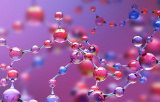Reducing agents include a number of chemical compounds such as DTT (dithiothreitol), DTE (dithioerythritol), L-glutathione (GSH), TCEP (Tris(2-carboxyethyl)phosphine hydrochloride), and 2-mercaptoethanol.
Definition and Function
By definition, reducing agents are elements or compounds that donate electrons to oxidizing compounds. In doing so, they themselves become oxidized. This electron exchange allows compounds to switch between reduced and oxidized states, enabling reversible redox reactions.
Role in Protein Chemistry
At the protein level, reducing agents play a crucial role in breaking disulfide bonds between cysteine residues. These disulfide bridges are important for the tertiary and quaternary structure of proteins and must often be reduced to linearize or denature the protein.
Enhancing Efficiency of Reduction
Reducing deeply buried disulfide bonds can be challenging. To enhance the efficiency of the process, reduction is often performed at high temperatures or in the presence of denaturing agents like guanidine-HCl or urea, which help unfold the protein and expose the bonds to the reducing agent.




